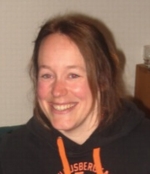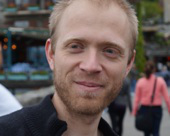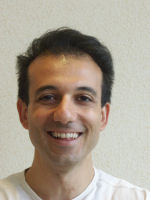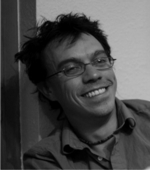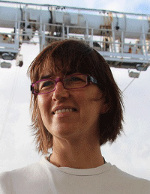SFMC OFFICERS
PRESIDENT Bertrand DEVOUARD
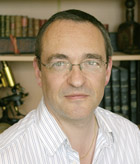
Bertrand Devouard is a professor at the University of Aix-Marseille and a researcher at the CEREGE department. His research uses mineralogy and crystal chemistry methods, including high-resolution microscopy and spectroscopy, applied to materials such as meteorites, gems and synthetic materials. Bertrand has particular interest for mesostructured, aperiodic or poorly crystallized mineral materials, for which he studies the growth-controlling factors and mechanisms.
VICE-PRESIDENT Michel GREGOIRE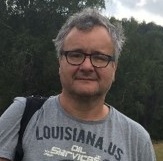
Michel Grégoire is a CNRS director of research working in Toulouse in the “Géosciences Environnement Toulouse » (GET) laboratory. Michel is a petrologist interested in the origin and evolution of mantle, magmatic and metamorphic rocks with mafic and ultramafic composition, in continental and oceanic domains. To carry out his research, he uses optical and electron microscopy together with laser ablation ICP-MS.
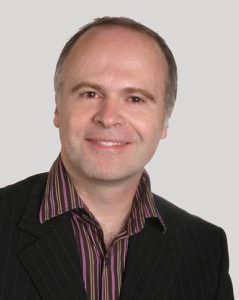 VICE-PRESIDENT François FARGES
VICE-PRESIDENT François FARGES
Professor at the Muséum national d’Histoire naturelle, honorary member of the IUF and of Stanford University, he studied the structure of some geological amorphs (glass, magmas, metamicts) by various methods including X-absorption spectrometry and the introduction of Pauling and stoichiometry laws in the structural modelling of these amorphous. He co-assembled and/or examined various synchrotron light lines in the USA, France and Switzerland. He was then responsible for the conservation of the national collection of mineralogy and gemmology (at the MNHN). He currently studies large historical gems using 4D modelling methodologies, photorealistic reconstruction and archival research, as well as the assembly of permanent and travelling exhibitions that promote geodiversity among the general public.
SECRETAIRE GENERAL Marc BLANCHARD 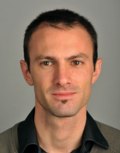
Marc Blanchard is a CNRS director of research working in Toulouse in the “Géosciences Environnement Toulouse » (GET) laboratory. He has interest in processes controlling isotopic fractionation, in the crystal chemistry of mineral phases with environmental importance and in the crystal chemistry of volatiles in the mantle. To this end, Marc mainly uses molecular-scale modelling techniques and spectrosopy.
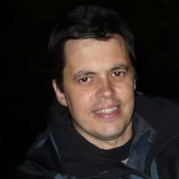 SECRETAIRE GENERAL ADJOINT Etienne BALAN
SECRETAIRE GENERAL ADJOINT Etienne BALAN
Researcher at the Institut de Recherche pour le Développement (IRD). His research work, conducted at the Institut de Minéralogie et Physique des Milieux condensés (Paris VI University), focus on the use of minerals to trace tropical climate alteration processes and geochemical cycles acting on the Earth’s surface. He uses spectroscopic tools to determine the individual characteristics of mineral categories, linked to the presence of specific defects. In parallel, he uses theoretical numerical tools to interpret spectroscopic measurements and to model the physico-chemical properties of these minerals.
TRESORIER Christian CHOPIN
CNRS Research Director, in the Laboratoire de Géologie de l’Ecole normale supérieure (Paris). His main interests are metamorphic and experimental petrology, phase relations, fluid-rock interactions, and the characterisation and crystallochemistry of minerals, especially silicates and phosphates. He is in charge of the publication of the SFMC journal: European Journal of Mineralogy.
TRESORIER ADJOINT Armand MASION 
Armand Masion is a CNRS researcher working at the CEREGE research department in Aix-en-Provence. A physical chemistry graduate, he has worked on the nucleation and growth of colloids and on their speciation in environmental systems, in an effort to understand the migration of colloids and their role in the migration of pollutants and nutrients. His current research is focussed on the environmental implications of nanoparticles and nanomaterials. Armand uses spectroscopic tools to identify processes of formation and interaction of particles at molecular scale.
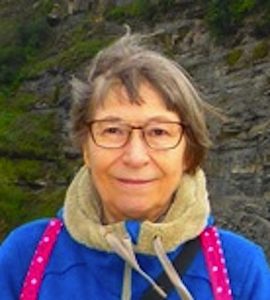 REDACTRICE DU BULLETIN / CORRESPONDANTE “ELEMENTS” Monique Seyler
REDACTRICE DU BULLETIN / CORRESPONDANTE “ELEMENTS” Monique Seyler
Monique Seyler is an emeritus lecturer working at the Laboratoire d’Océanologie et Géosciencesin Lille. Her research focusses on the study of the lower crust and lithospheric mantle in various geological contexts (mid-ocean ridges, ophiolites, passive margins). Monique enjoys carrying out interdisciplinary studies with fieldwork, petrology, structural studies, geochemistry and numerical modelling. Her recent work has been aimed at the petrology of abyssal peridotites at the mid-Atlantic and sout-west Indian ridges and linked to the genesis of mid-ocean ridge basalt.
SFMC COUNCILLORS
Councillors (term 2016-2019)
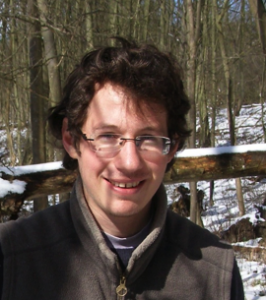 Pierre BARRE
Pierre BARRE
Pierre Barré is a CNRS researcher working at the geology department of Ecole Normale Supérieure de Paris. A biogeochemistry graduate, Pierre in interested in the mineralogy of soils and its role in ecosystems, in environmental contexts. His research has particularly focussed on the importance of soil mineralogy for soil structure and for the dynamics of potassium. Pierre has also been working for several years on the links between soil mineralogy and stability of organic matter. He uses multiple methods of characterisation (XRD, SEM-FEG, thermal and spectroscopic tools) on field-sampled soils, including long term agronomic experiments.
Researcher at Orsay Institut de Chimie Moléculaire et Matériaux (CNRS, Paris-Sud University), Amélie Bordage has a physicist background. She was interested in the impurities present in certain gems and minerals, and in particular the structural and electronic properties related to the presence of impurity. Her research today focuses on functional molecular materials with magnetic properties. The common thread of these themes is the use of synchrotron radiation to characterize the structural, electronic and magnetic properties of the material at a local scale. In particular, she uses the absorption and emission of X-rays, and associates this experimental approach with a theoretical determination of spectra in order to better understand the material.
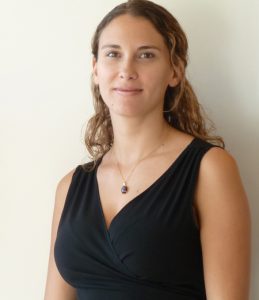 Eloïse GAILLOU
Eloïse GAILLOU
Eloïse Gaillou holds a Master’s degree in Geology from Blaise-Pascal University (2003), A PhD in Material Sciences from the University of Nantes (2006), and a Diploma in Gemmology University. She did her first post-doctorate at the Smithsonian Institution in Washington, DC (2007-2009) and worked on the diamonds in the collection, including the Hope diamond and Marie-Louise’s necklace. She did another post-doctorate in partnership with the Smithsonian and the Carnegie Institution (2009-2010) before leaving in January 2011 as curator associated with the Natural History Museum of Los Angeles. She takes up her current position as assistant Curator at MINES Musée de Minéralogie ParisTech in January 2015.
Michel JULLIEN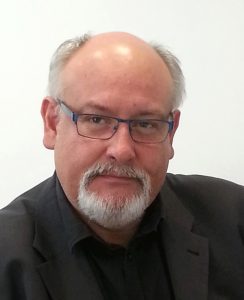
Michel Jullien was awarded a Ph.D. in mineralogy after his thesis on ordering and polytypism in phyllosilicates carried out at the Laboratoire de Géologie de l’École Normale Supérieure (Paris). A geologist with expertise on material reactivity sensu lato, he has worked at CEA for 15 years as a research engineer and project manager in risk assessment, facility and storage safety. He is currently CEO of ECOGEOSAFE SAS, a corporation located at Aix-en-Provence carrying out consultancy and R&D for risk assessment and environmental engineering.
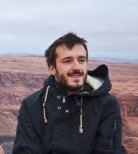 Pierre LANARI
Pierre LANARI
Currently a research assistant at the Institute of Geological Sciences of Bern University, he works in the field of metamorphic petrochronology. He has specialized in chemical and isotopic analyses of electron microprobe and Laser Ablation Inductively Coupled Plasma Mass Spectrometry. He has also developed a program (XMapTools) for quantitative micromapping analysis. This technique is used with U-Th-Pb dating to constrain the crystallisation kinetics and crystallisation conditions of metamorphic parageneses, especially in high-pressure rocks.
Councillors (term 2014-2017)
Damien Daval is a CNRS researcher working at the Laboratoire d’Hydrologie et de Géochimie de Strasbourg (LHyGeS). His work is centred on studying the kinetics of fuild-rock interactions, and more precisely the links between the microstructure of the surface of weathered minerals and their reactivity to aqueous alteration. To do so, Damien combines classical wet chemistry tools with techniques of characterisation of the fluid/soild interface at nano- and micro-scale. His research applies to weathering in surface conditions (e.g. in soils) up to hydrothermal alteration (geothermal sites, CO2 storage).
Simonpietro Di Pierro is Head of Groupe Minéralogie Appliquée, a team of seven engineers and twelve research technicians, within the Département Expertises Matériaux Composites Cristallins de Saint-Gobain Recherche (SGR), in Aubervilliers. Among his main interests, the optical quality of industrial glass and the following fields of application: raw materials capable of being vitrified, refractory ceramic materials, thermomechanical behaviour and relationship between microstructures and properties of glass and vitroceramics, gas and glass relationships at high temperature. Simonpietro Di Pierro holds a Master’s degree in Earth Sciences from the University of Turin in Italy where he studied ophiolites, and a PhD in Applied Mineralogy from the University of Fribourg in Switzerland, where he studied the Neolithic ceramics of the Swiss midlands. Before joining SGR, he was interested in the mineralogy of the mantle, and in particular moissanite (ENS in Lyon).
Lydéric France is a lecturer working in the Univeriosté de Lorraine (Nancy) at the Centre de Recherches Pétrographiques et Géochimiques (CRPG). His research is based on understanding magmatic processes in various geodynamic contexts. Lydéric uses multi-disciplinary approaches (field work, petrology, geochemistry) to better understand how magmatic chambers work and better quantify changes in their physical parameters (pressure, temperature, composition, oxygen fugacity) over time. His current research projects involve mid-ocean ridges and rifting zones such as Afar, the East African ridge and the French Massif Central.
Marguerite Godard is a CNRS director of research working in the Geosciences research department of Montpellier. Her work focusses on identifying and quantifying processes responsible for the migration of melts and hydrothermal fluids, and their implications for the structure anf composition of the oceanic lithosphere – from mid-ocean ridges to subduction zones. Marguerite has a multi-disciplinary approach, combining petro-structural and geochemical studies on natural samples (ocean drillings and ophiolites), experimental petrology and numerical modelling. In this context, Marguerite has been especially involved in trace element analysis of very depleted rocks such as ultramafics, over the bulk rock and in-situ with laser ablation. More recently, she participated in the development of reactive percolation techniques (ICARE laboratory) for in-vitro modelling of hydration and carbonation reactions of ultramafic rocks in hydrothermal systems, with implications for sites of geological storage of CO2. Marguerite has been an editor of CR Geoscience since 2013.
Armand Masion is a CNRS researcher working at the CEREGE research department in Aix-en-Provence. A physical chemistry graduate, he has worked on the nucleation and growth of colloids and on their speciation in environmental systems, in an effort to understand the migration of colloids and their role in the migration of pollutants and nutrients. His current research is focussed on the environmental implications of nanoparticles and nanomaterials. Armand uses spectroscopic tools to identify processes of formation and interaction of particles at molecular scale.
COMMISSAIRES AUX COMPTES
Jannick INGRIN
CNRS Research Director at LMTG in Toulouse (Head of the Mineralogy team). He is a specialist in experimental mineralogy, and is particularly interested in measuring the physico-chemical properties of minerals, atomic diffusion, deformation and reaction kinetics. His recent work deals with the speciation of water in the mantle’s anhydrous minerals.
Michel MADON
Professor, University of Marnes-la-vallée, Director of a component of Marne-la-vallée University: the IFG (Francilian Institute of Geosciences). My interests always converge on the material vibrational spectroscopy of geological interest and the behaviour of materials (in a broad sense) for the storage of waste (nuclear or household).

